
Gryllinae, or field crickets, are a subfamily of insects in the order Orthoptera and the family Gryllidae.
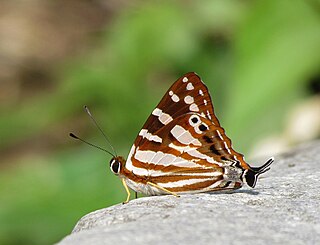
Dodona egeon, the orange Punch, is a small but striking butterfly found in the Indomalayan realm - in Mussoorie to Assam, Burma (nominate) and Peninsular Malaya that belongs to the family Riodinidae.

Prosotas noreia, the white-tipped lineblue, is a species of lycaenid butterfly found in South Asia and Java.

Junonia almana, the peacock pansy, is a species of nymphalid butterfly found in Cambodia and South Asia. It exists in two distinct adult forms, which differ chiefly in the patterns on the underside of the wings; the dry-season form has few markings, while the wet-season form has additional eyespots and lines.It is listed as Least Concern in the IUCN Red List.

Tingena armigerella is a species of moth in the family Oecophoridae. T. armigerella is endemic to New Zealand where it is found in the North Island. The larvae of this species feed on plant litter.
Argidava is a genus of moths in the family Geometridae erected by Francis Walker in 1863.
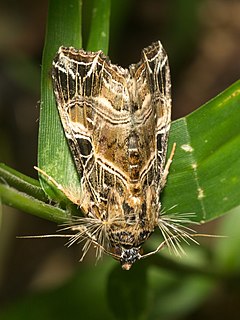
Callopistria rivularis is a species of moth of the family Noctuidae. It is found from the Indo-Australian tropics of India, Sri Lanka up to the Solomon islands and Fiji.
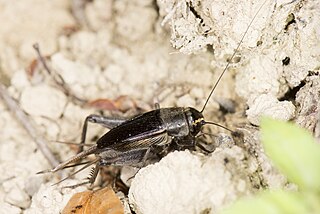
Teleogryllus is a genus of crickets in the family Gryllidae. Species can be found in: Africa, Asia, Australia and the Pacific islands.

Izatha copiosella is a moth of the family Oecophoridae. It is endemic to New Zealand, where it is found on the south-eastern parts of the North Island and throughout the South Island except the West Coast. Larvae are found in dead wood and are likely to use kōwhai species as hosts. The adults are night fliers and are attracted to light. They are on the wing in January and February.

Cebrionini is a tribe of click beetles from the family Elateridae; formerly ranked as a subfamily or family, they are now considered a tribe within the subfamily Elaterinae.

Mogoplistidae is a family of scaly crickets within the superfamily Grylloidea. Considered to be monophyletic, a sister taxon to the Gryllidae crickets. This family consists of 30 genera and 364 species worldwide; 20 species in 4 genera occur in North America and this family includes the scaly crickets of Europe.
Eudonia linealis is a species of moth in the family Crambidae. This species is endemic to New Zealand. It is classified as "Data Deficient" by the Department of Conservation.
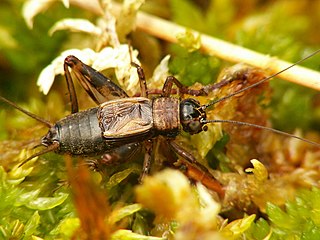
Nemobiinae is a subfamily of the newly constituted Trigonidiidae, one of the cricket families. The type genus is Nemobius, which includes the wood cricket, but members of this subfamily may also be known as ground crickets or "pygmy field crickets".

Podoscirtinae is a subfamily of crickets in the family Gryllidae.

Trigonidium is a large genus of sword-tail crickets, typical of the tribe Trigonidiini. Records of occurrence are from Europe, Africa, tropical Asia, Australia and the Pacific islands; many species endemic to Pacific islands including Hawaii have now been placed in the genus Nudilla.
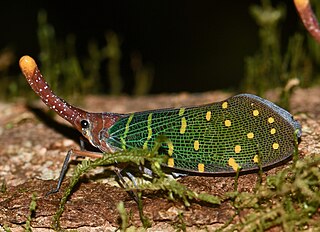
Pyrops intricatus is a species of lantern bug, an insect in the family Fulgoridae, found in Borneo. It was originally described in 1857 by Francis Walker as Hotinus intricatus.
Pteronemobius is a genus of cricket in the subfamily Nemobiinae, with a worldwide distribution.
Itara is an Asian genus of crickets, and typical of the subfamily Itarinae. Species can be found in India, southern China, Indo-China and West Malesia.
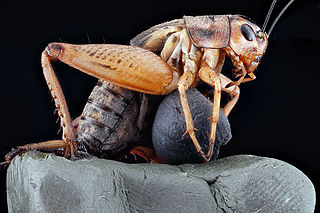
Velarifictorus is a genus of crickets in the family Gryllidae and tribe Gryllini. Species have been recorded in Australia, Asia, Africa and the southeastern US.
Aphonoides is a genus of crickets in the subfamily Podoscirtinae and tribe Aphonoidini. Most species records are from eastern Asia and Australasia, but some have been found in Africa and South America.














